Abstract
Gene delivery vectors based on Adenoviral (Ad) vectors have enormous potential for the treatment of both hereditary and acquired disease. Detailed structural analysis of the Ad virion, combined with functional studies has broadened our knowledge of the structure/function relationships between Ad vectors and host cells/tissues and substantial achievement has been made towards a thorough understanding of the biology of Ad vectors. The widespread use of Ad vectors for clinical gene therapy is compromised by their inherent immunogenicity. The generation of safer and more effective Ad vectors, targeted to the site of disease, has therefore become a great ambition in the field of Ad vector development. This review provides a synopsis of the structure/function relationships between Ad vectors and host systems and summarizes the many innovative approaches towards achieving Ad vector targeting.
Keywords: Ad biology, Ad trafficking, Ad structure
Current Gene Therapy
Title: Current Advances and Future Challenges in Adenoviral Vector Biology and Targeting
Volume: 7 Issue: 3
Author(s): Samuel K. Campos and Michael A. Barry
Affiliation:
Keywords: Ad biology, Ad trafficking, Ad structure
Abstract: Gene delivery vectors based on Adenoviral (Ad) vectors have enormous potential for the treatment of both hereditary and acquired disease. Detailed structural analysis of the Ad virion, combined with functional studies has broadened our knowledge of the structure/function relationships between Ad vectors and host cells/tissues and substantial achievement has been made towards a thorough understanding of the biology of Ad vectors. The widespread use of Ad vectors for clinical gene therapy is compromised by their inherent immunogenicity. The generation of safer and more effective Ad vectors, targeted to the site of disease, has therefore become a great ambition in the field of Ad vector development. This review provides a synopsis of the structure/function relationships between Ad vectors and host systems and summarizes the many innovative approaches towards achieving Ad vector targeting.
Export Options
About this article
Cite this article as:
Campos K. Samuel and Barry A. Michael, Current Advances and Future Challenges in Adenoviral Vector Biology and Targeting, Current Gene Therapy 2007; 7 (3) . https://dx.doi.org/10.2174/156652307780859062
| DOI https://dx.doi.org/10.2174/156652307780859062 |
Print ISSN 1566-5232 |
| Publisher Name Bentham Science Publisher |
Online ISSN 1875-5631 |
Call for Papers in Thematic Issues
Programmed Cell Death Genes in Oncology: Pioneering Therapeutic and Diagnostic Frontiers (BMS-CGT-2024-HT-45)
Programmed Cell Death (PCD) is recognized as a pivotal biological mechanism with far-reaching effects in the realm of cancer therapy. This complex process encompasses a variety of cell death modalities, including apoptosis, autophagic cell death, pyroptosis, and ferroptosis, each of which contributes to the intricate landscape of cancer development and ...read more
Related Journals
 30
30
- Author Guidelines
- Graphical Abstracts
- Fabricating and Stating False Information
- Research Misconduct
- Post Publication Discussions and Corrections
- Publishing Ethics and Rectitude
- Increase Visibility of Your Article
- Archiving Policies
- Peer Review Workflow
- Order Your Article Before Print
- Promote Your Article
- Manuscript Transfer Facility
- Editorial Policies
- Allegations from Whistleblowers
- Announcements
Related Articles
-
The Role of the Brain Renin-Angiotensin System in Neurodegenerative Disorders
Current Alzheimer Research Early Diagnostic and Predictive Value of Capillaroscopy in Systemic Sclerosis
Current Rheumatology Reviews IL-6, IL-1β, and MDA Correlate with Thrombolysis in Myocardial Infarction (TIMI) Risk Score in Patients with Acute Coronary Syndrome
Recent Advances in Inflammation & Allergy Drug Discovery Fluoroquinolones: Blessings Or Curses
Current Drug Targets Statins and Solid Organ Transplantation
Current Pharmaceutical Design Smooth Muscle Progenitor Cells: Friend or Foe in Vascular Disease?
Current Stem Cell Research & Therapy Recent Development in Applications of Important Biopolymer Chitosan in Biomedicine, Pharmaceuticals and Personal Care Products
Current Tissue Engineering (Discontinued) CYP3A4 *1B Gene Polymorphism in Coronary Artery Disease Patients with Obesity Undergoing Statin Treatment
Current Pharmacogenomics and Personalized Medicine Cellular Mechanisms of the Protective Effect of Polyphenols on the Neurovascular Unit in Strokes
Cardiovascular & Hematological Agents in Medicinal Chemistry Implications of the Obesity Epidemic for Statin Therapy: Shifting Cholesterol Metabolism to a High Synthesis and Low Dietary Absorption State
Endocrine, Metabolic & Immune Disorders - Drug Targets Oxidative-Nitrosative Stress as a Contributing Factor to Cardiovascular Disease in Subjects with Diabetes
Current Vascular Pharmacology Duloxetine in the Treatment of Depression: An Overview
Central Nervous System Agents in Medicinal Chemistry Pathophysiology and Treatment of Diabetic Peripheral Neuropathy: The Case for Diabetic Neurovascular Function as an Essential Component
Current Diabetes Reviews Biologic Therapy and Treatment Options in Diabetic Retinopathy with Diabetic Macular Edema
Current Drug Safety General Perspectives for the Treatment of Atherosclerosis
Letters in Drug Design & Discovery Management of Hypertension in Relation to Acute Coronary Syndromes and Revascularisation
Current Pharmaceutical Design Circulating Endothelial Cells: Markers and Mediators of Vascular Damage
Current Stem Cell Research & Therapy Influence of Statin Use on Endothelial Function: From Bench to Clinics
Current Pharmaceutical Design Red Wine Consumption and Prevention of Atherosclerosis: An In Vitro Model Using Human Peripheral Blood Mononuclear Cells
Current Pharmaceutical Design Calcium Store Stability as an Antiarrhythmic Endpoint
Current Pharmaceutical Design












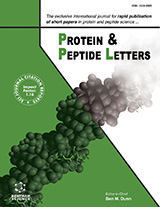
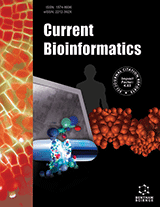
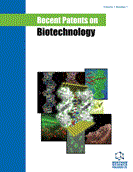
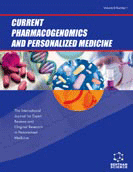
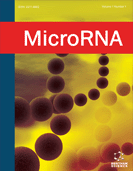
.jpeg)








